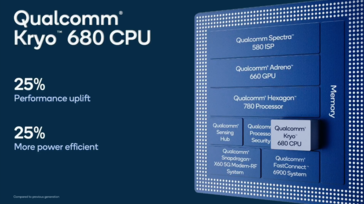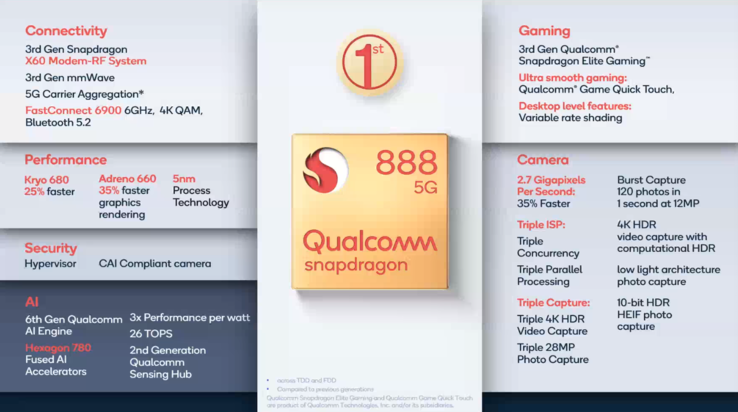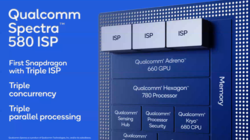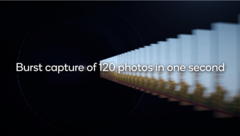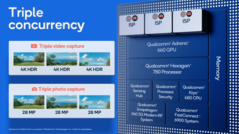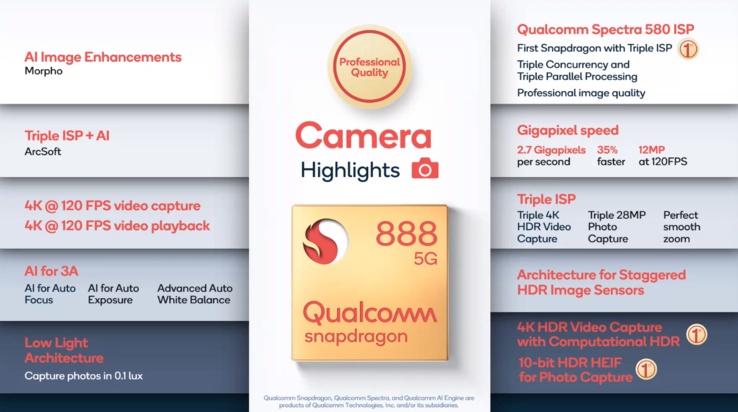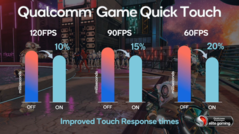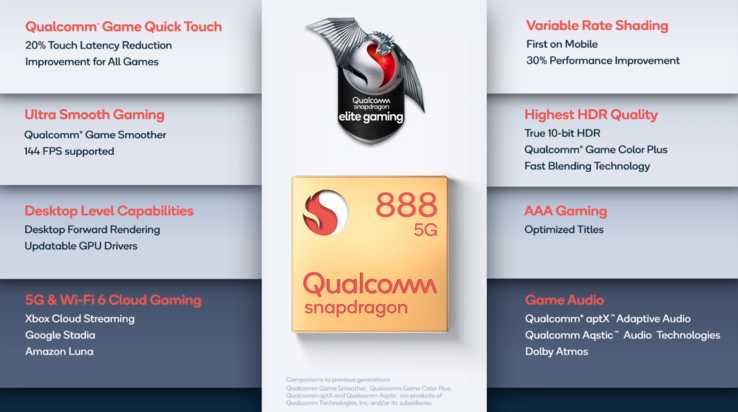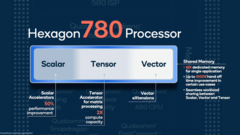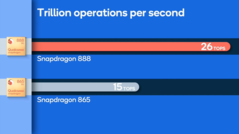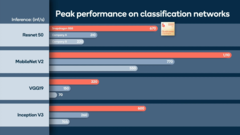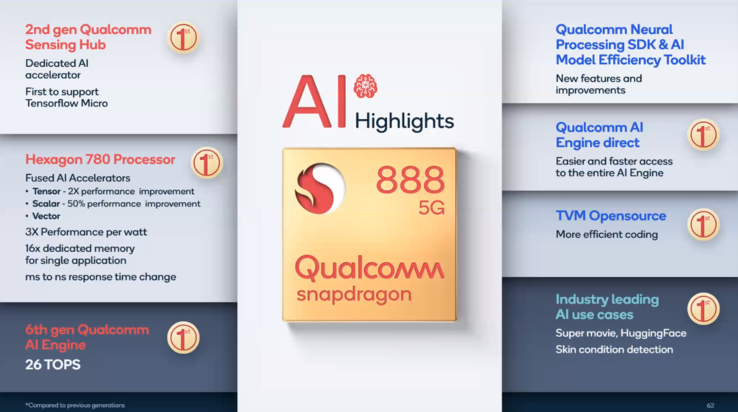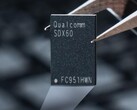Qualcomm Snapdragon 888 5G deep dive — New flagship SoC promises significant improvements in camera, gaming, and AI
It has now been about a year since the US semiconductor manufacturer launched its last high-end chip, the Snapdragon 865. With the brand-new Snapdragon 888, Qualcomm breaks with its previous name for the first time (865, 855, 845, ...). The 8 in the model name, which identified the chip as a representative of the highest performance class, is now tripled to make the new chip an over-premium SoC.
With the step from a 7 to a 5 nm process, production-related performance increases in the double-digit percentage range can be expected and the energy efficiency of the chip should also improve in the double-digit range. In addition, Qualcomm promises numerous improvements, particularly in the camera and AI capabilities of the new chip.
The first smartphones based on the new Snapdragon 888 SoC are expected to be on the market as early as the first quarter of 2021.
Overview of key features
While the Snapdragon 865 still had to rely on a provided 5G modem, Qualcomm integrated the new X60 modem RF system into the chip. The modem was introduced in early 2020 and, like the entire 888 chip, is based on 5 nm manufacturing technology. With the X60 modem, the Qualcomm FastConnect 6900 system is also incorporated into the new chip that provides WiFi 6 and WiFi 6E (6 GHz) and Bluetooth 5.2 functionality.
For image processing, Qualcomm's new Snapdragon 888 uses the Spectra 580 CV-ISP, the world's first triple image processor. In the future, three camera modules can be processed simultaneously, giving users completely new options for image and video recording, post-processing, and editing.
In terms of the graphics processor, the Qualcomm Adreno 660 GPU replaces the Adreno 650 in the predecessor and is expected to enable around 35% faster image rendering with an efficiency increase of around 20%. For AI applications, the Hexagon 780 computing unit is available, which, by merging the Scalar, Tensor and Vector computing units, experiences a tremendous acceleration in terms of internal data exchange. Compared to its predecessor, Qualcomm also wants to have improved the performance per watt by a factor of 3x.
Improvements also include the Qualcomm Sensing Hub, the Qualcomm Security Processor (isolated OS for individual apps, instant switch between isolated systems) and the Kryo 680 CPU Unit. The basic structure of the Kryo 680 CPU — one 2.84 GHz prime core (Cortex X1), three 2.4 GHz performance cores (Cortex-A78) and four 1.8 GHz efficiency cores (Cortex-A55) — is similar to its predecessor, the Kryo 585, but based on a new architecture. Overall, the CPU should achieve a performance increase of 25% and an increase in efficiency of 25% compared to its predecessor.
The Qualcomm AI engine, i.e. the combination of the Adreno GPU, Hexagon processor, the Sensing Hub and the Kryo CPU, is now expected to achieve up to 26 TOPS. Compared to the predecessor SD 865, this is almost double the performance (15 TOPS).
Qualcomm does not yet provide information about the TDP of the chip or the chip size (with the integrated X60 modem)
Imaging — Spectra 580 triple ISP controls three camera modules in parallel
Qualcomm counts the triple ISP Spectra 580 among the most important features of the new Snapdragon 888 SoC. This makes it possible to process the image or video data of three camera modules (3x 4K HDR or 3x 28 megapixels) in parallel, such as the main camera, an additional wide-angle camera and a further lens with zoom. Thanks to the parallel data processing, the change from one camera module to another (zoom), for example, is practically seamless.
Qualcomm states a data rate of 2.7 gigapixels per second that the new Spectre 580 ISP achieves, an improvement of 35% over its predecessor Spectra 480 (2 gigapixels). Thanks to this enormous data rate, it will also be possible for the first time to capture up to 120 images per second at maximum resolution. Qualcomm also wants to have significantly improved the low-light performance. It should now be possible to take pictures even at only 0.1 lux, which is about the brightness of a full moon night.
Qualcomm's Spectra 590 ISP will also support upcoming "Staggered HDR" image sensors. Put simply, final images are composed of three individual images with different exposure, with the aim of achieving a particularly wide color dynamic range. This technique can be used for both images and videos (4K with "computational" HDR). In addition, the Spectra 590 ISP also allows the capture of 10-bit photos in HEIF format.
AI is also set to play an even more important role in the high-end smartphone cameras of the future. Qualcomm mentions AI-based autofocus, auto exposure or automatic white balance. For this, image content must first be recognized by AI in order to be able to make the necessary adjustments automatically within fractions of a second before the image is captured.
Mobile gaming - Variable Rate Shading frees-up resources for developers
Qualcomm also promises to make some improvements in the area of mobile gaming. The new Adreno 660 GPU is said to have made no less than the biggest leap in its development history to date — 35% more performance with 20% improved efficiency compared to its predecessor, the Adreno 650.
Game Quick Touch is said to significantly improve the response time for touch input. The advantage over previous solutions should be around 20% at 60 Fps, around 15% at 90 Fps and around 10% at 120 Fps.
Variable Rate Shading presents itself as exciting for developers. The principle is based on rendering areas with lower detail levels, which are secondary to the game action, with a lower resolution. Here, too, AI plays an essential role in the recognition of image content. With Variable Rate Shading, it should be possible to save up to 30% in performance resources, which, according to Qualcomm, can be used by developers for more complex content.
AI - Significantly more performance, better efficiency and always-on AI functions
Qualcomm's previous chips already highlighted the importance of AI functionality for current and future smartphone hardware. Qualcomm's current Snapdragon 888 SoC now integrates the 6th generation Qualcomm AI engine. The heart of all AI functions is the Hexagon 780 processor, which now merges the Tensor, Vector and Scalar calculation units. Special applications that depend on the exchange of data between the cores should thus benefit from the throughput accelerated by a factor of 1000x.
Qualcomm also seems to have improved the calculation units themselves. For example the scalar cores offer up to 50% more performance and the tensor cores now have twice the calculation capacity compared to their predecessor. All improvements together are slated to highly benefit the efficiency of the Hexagon processor; Qualcomm mentions up to three times the performance of the predecessor per watt of energy consumption.
The Qualcomm Sensing Hub now integrates a special low-power AI processor, which is specially designed to handle always-on tasks and can thus relieve some of the Hexagon processor's burden. Qualcomm sees possible application scenarios such as background noise detection, general activity detection, accident detection, earthquake detection, etc. Qualcomm AI Engine direct also provides a common interface (API) for developers to get the most out of the AI capabilities of the Snapdragon 888.
Source
Qualcomm Press Brief





